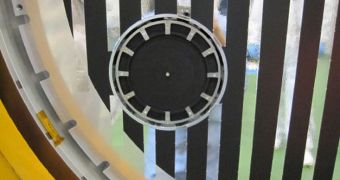Recently, the Japan Aerospace Exploration Agency (JAXA) announced that its prototype spacecraft, the Ikaros solar sail, managed to harness the energy of photons in order to move through space. This is the first time a working machine of this nature has been devised, and the eyes of the entire worlds turned to the innovation. Now, officials at the agency make another important announcement, and namely that Ikaros managed to identify its first gamma-ray burst (GRB), a high-energy event that is among the most violent type of occurrences in the entire Universe.
The onboard GAmma-ray burst Polarizespad light detector (GAP) instrument managed to catch the event “on tape,” mission managers explain. They say that the readings were recorded on July 7, and that the last few weeks were dedicated to analyzing telemetry data Ikaros returned to Earth. Astrophysicists explain that GRB are waves of radiation that result from exploding stars. Whenever a celestial fireball reaches the end of its burning cycle, its hydrogen becomes insufficient to sustain nuclear fusion. As this happens, the star becomes unstable, and eventually it expels the outer layers of its atmosphere.
The end result is either a neutron star or a black hole, depending on the mass of the original celestial body. Massive amounts of radiations are emitted in these explosions. When a star goes supernova, the brightness of the explosion can briefly outshine the light emitted by the entire galaxy in which the cosmic fireball is located. This was made obvious recently, as a GRB temporarily blinded NASA's Swift satellite with its intensity, Space reports.
“Polarized light observations will contribute to elucidate the magnetic structure and the radiation mechanism of gamma-ray bursts, thus they are expected to greatly help solve the mystery of the death of massive stars and the birth of black holes,” JAXA officials said at a three-day solar sail symposium. The event was held in New York, and concluded yesterday, July 22. It was dedicated to Ikaros, and to discussing the future of solar sails in general. JAXA experts presented a variety of data pertaining to how their spacecraft functions, its discoveries, and also to the way the mission unfolded thus far.

 14 DAY TRIAL //
14 DAY TRIAL //